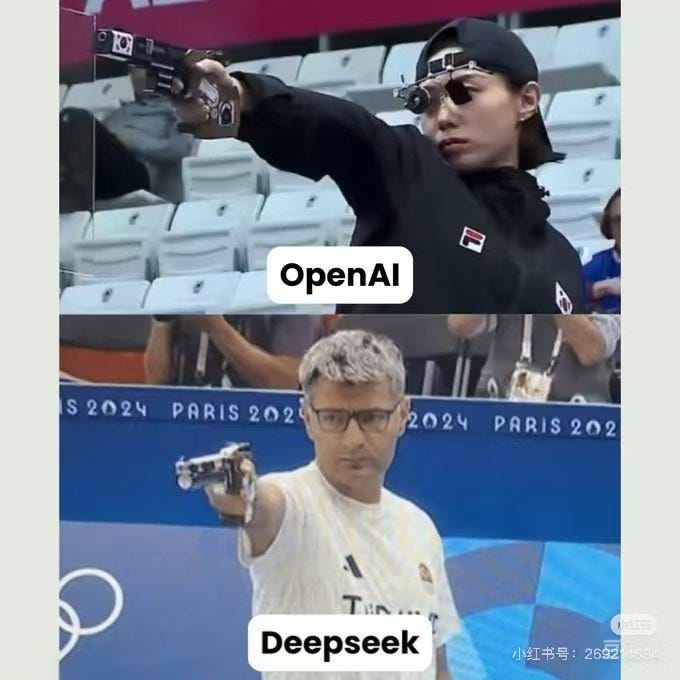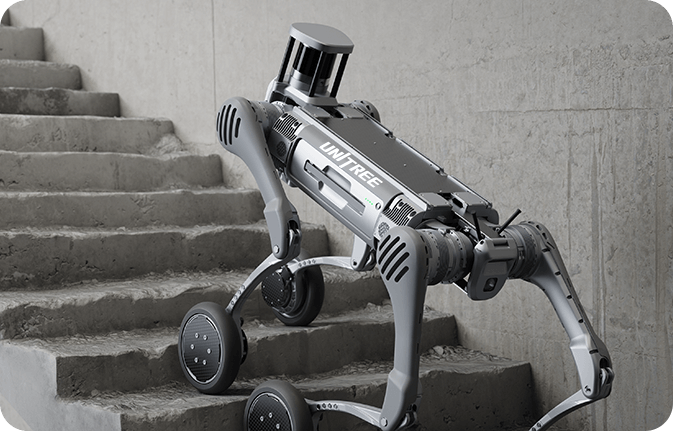The Dragon’s Code
How Chinese AI Startups Are Outpacing Silicon Valley in the Global Tech Arms Race
For years, Silicon Valley has been the undisputed epicenter of AI innovation, with household names like OpenAI, Google DeepMind, anthropic and Boston Dynamics dominating headlines. But halfway across the globe, a new wave of Chinese startups is quietly—and sometimes loudly—rewriting the rules of the game. From code-generating wunderkinds to robots that move like living creatures, China’s AI ecosystem isn’t just catching up; it’s leapfrogging. And the implications are seismic.
I’ve used most of the tools mentioned below and boy was I surprised.
DeepSeek: The AI Industry Gets a Jolt
DeepSeek is making noise with DeepSeek-R1, an open-source data analysis tool that aims to disrupt the status quo. According to all the reports, DeepSeek-R1 has demonstrated strong performance in various benchmarks, including achieving impressive results in mathematics tests like AIME 2024 and MATH-500, even surpassing OpenAI's models in some of these evaluations.
I could experience this during my usage. The responses were accurate, and it understood subtle nuances in the prompts very well. But its Hero product is Deepthink. Deepthink is DeepSeek’s combined version of OpenAI’s o1 and Cursor. It can create basic HTML games, Websites, in-depth reports and apparently codes as well as o1 and cursor. I tried to generate a few reports in the style of BCG/Mckinsey outputs and it generated them in about a minute. You also get a peek into its chain of thought that makes it more human-like- self critical, introspective, firing off various thoughts just like a human.
And it’s Free for individual users for now. And for enterprise? DeepSeek R1 is approximately 50 times cheaper than OpenAI’s offering. We’re talking about getting comparable — sometimes superior — performance for about 2% of the cost. This isn’t just disruption; it’s a full-blown revolution in AI economics.
The kicker? DeepSeek’s models are open-source and optimized for China’s homegrown chips, sidestepping U.S. export restrictions. Silicon Valley’s grip on the future of software development just got a lot looser.
Hailuo: Text-to-Video Goes Unlimited (and Free)
In the increasingly crowded text-to-video space, Hailuo AI is making a bold move: free, unlimited video generation with their S2V model. This isn’t a gimmick; it’s a potential game-changer, democratizing video production by letting anyone transform text prompts into compelling visuals. It has an intuitive interface and powerful features, churning out high-quality content with minimal effort. Hailuo isn’t just keeping pace; they’re raising the bar for AI-driven content creation.
Kling AI: Hyperrealism Redefined
When OpenAI teased Sora, its text-to-video model, the internet erupted. But while the world waited for access, China’s Kling AI (from the makers of TikTok rival Kwai) was already generating 3-minute, 720p videos from simple prompts—no waitlist required. Kuaishou’s Kling AI is pushing the boundaries of hyper-realistic video generation. This isn't your average animation software; Kling AI excels at creating incredibly lifelike movement and animation, making it a powerful tool for industries like gaming and film. Recent updates focus on even more fluid and realistic animations.
Kling’s edge isn’t just speed; it’s cultural nuance. While Sora struggles with non-Western contexts (try asking it for a “traditional Indian wedding”), Kling’s training data is steeped in Asia-specific imagery. For global marketers, that’s a goldmine.
Beyond Software: The Robots Are Coming (Too)
Boston Dynamics’ Spot robot became a viral sensation with its parkour skills—until Unitree dropped the Go2, a quadruped bot that’s twice as agile at one-tenth the price ($ 1600 vs. $75,000!!!). With motors quieter than a housecat and the ability to climb 35-degree slopes, Go2 isn’t just a toy. Chinese emergency crews recently deployed fleets of Unitree robots to search earthquake rubble in Gansu province, streaming real-time thermal data to rescuers.
Meanwhile, Boston Dynamics’ CEO admitted last quarter that the company is “reassessing pricing models.” Ouch.
The narrative that China merely copies U.S. tech is kind of obsolete. From DeepSeek’s open-source AI prowess to Unitree’s disaster-ready robots, Chinese innovators are carving their own path—like the manufacturing industry, - one that prioritizes affordability, adaptability, and razor-focused niche markets.
Silicon Valley isn’t losing. But it’s no longer running unopposed.
What’s in it for you?
If you are responsible for AI deployments in your organisation or looking at incorporating AI features in your offerings, it’s time to take a hard look at the China-based AI Tools that are cost-effective and sometimes better than the established names.
What does it mean for all of us?
With the low-cost AI tools sprouting out of China, the barrier to entry and usage of AI in products will plummet making it more ubiquitous in every facet of product and even our lives and work. The acceleration of AI and the singularity is in progress.
P.S. Oh also, the US stock markets led by Tech & AI companies is going to spiral downward due to Deepseek’s ultra-optimised pricing and hardware requirements. Stay safe.







